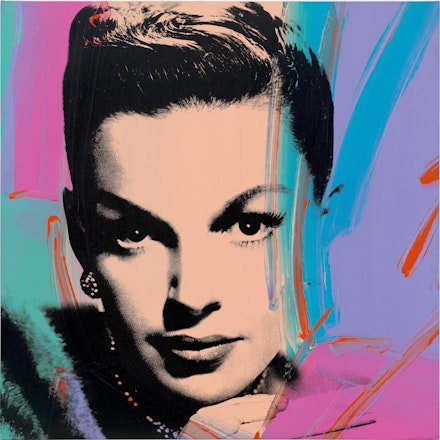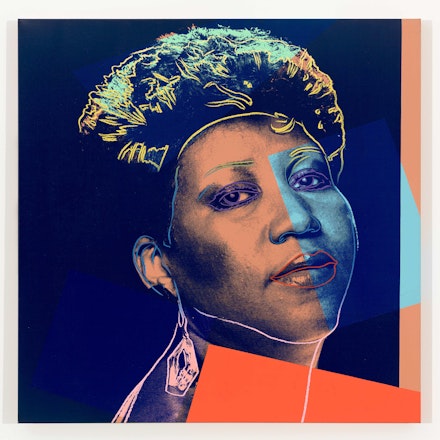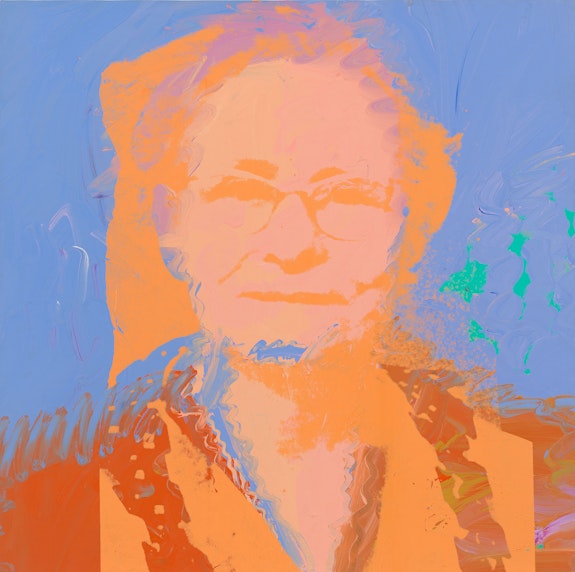ArtSeen
Warhol Women
Not since an exhibition of Warhol’s screenprints some years ago have I elected to write about the work of this monumental art world figure. Despite the controversy at that time, focusing on the history of Jews in the twentieth century, these prints seemed to hold resonances, both aesthetic and political, yet dissimilar to those embedded in Warhol Women. There is little doubt that the subject of women’s portraits in art continues to gain a certain level of controversial momentum. From the early ’60s to the mid ’80s, Warhol would take on the task of transforming his feminine subjects into stars. Despite who they were or who they would symbolically become, he gave Liz, Marilyn, Judy Garland, Aretha Franklin, Golda Meir, Ethel Scull, Jacqueline Kennedy Onassis, and the Mona Lisa equal status as celebrities through a unique artistic inheritance that had never been done before in quite the same way.
New York
LÉVY GORVYApril 25 – June 15, 2019
The timeliness of Warhol Women is apparent given the presence of other related exhibitions representing women by male artists such as Bacon and Picasso that have either been shown or are now in the process of being shown in New York. Comparisons in either case are relatively predictable. Given the focus of this review, I would briefly suggest the works of these artists read differently in both their classical and expressionist content. They possess neither the same photographic distance nor the intimate profusion of style that characterize the portraits of Warhol.
From a technical point of view, whether using silkscreen inks, synthetic polymer, acrylic or any combination thereof, Warhol’s indelibility offers the viewer (male or female) a vast autonomous perspective. Instead of an externally controlled, passive rendering used to depict women in oil paintings from the seventeenth century through Modernism to the present, Warhol offers a heightened mediated style of quasi-aristocratic conformity that brings the viewer in touch with the monetized present. The trade-off is an interesting one, if not complex in its irregularities.
In accordance with this exhibition, which encompasses all three floors of the gallery (including the stairwells), it would appear that the paintings chosen and borrowed from prestigious collections in Europe and the United States are exemplary in revealing elements of diversity and consistency in the varied expressions of Warhol’s subjects. This is primarily related to his inseparable fixation with the camera that ultimately becomes the source of his imagery. The manner in which his subjects pose themselves indeterminately in front of Warhol’s lens will ultimately determine how his audience will read his portraiture. This is particularly evident in the side-by-side display of the artist’s standard 40 by 40 inch quadrilateral paintings that wrap around the third floor gallery, the majority of which are based on previous photographs taken with a Polaroid Big Shot camera.
Here we find a truly profound diversity of women that includes Kimiko Powers (1972), Ileana Sonnabend (1973), “Baby” Jane Holzer (1975), Liza Minnelli (1976), Gertrude Stein (1978), Marjorie Copley (ca. 1980), Sarah Bernhardt (1980), Maria Shriver (1986), two stunning portraits of Corice Arman (1977 and 1988), and two portraits of the artist’s mother, Julia Warhola (1974). These latter paintings of his mother suggest incompletion—that they may not have been finished or, if they were, had not been entirely resolved. There is a feeling of conflict whereby they exist as portraits in process, a lingering reflection of Warhol’s inability to sublimate their relationship.
Based on the artist’s intuitive photographic insight and clarity of motivation, Warhol wanted his female subjects to pose in a relaxed manner either by will or by chance, but unaware of his presence. In doing so, the results soared beyond the limits of a fashion shoot into a commonality that brought the content of his female subjects together into a complementary relationship through painting. The message of feminine strength and congeniality in these paintings is without a doubt the curatorial core of Warhol Women.
The issue here is less related to the realities of everyday life than the artist’s ability to envision a sensory awareness of time in relation to women’s time and through an ingenious independent cognizance of color. The evidence of this bifurcated aesthetic ranges from Mint Marilyn (1962) to the exemplary Judy Garland (Multicolor) (1978). Then there are the two Dolly Parton (1985) paintings in the mix despite Warhol’s abrupt decision to extend his standard quadrilateral format two inches to 42 by 42 inches. Finally, there are few who will forget the heroic Red Jackie (1964) as a foremost statement on how Warhol’s portraits have the capacity to go beyond representation into the realm of who we could become today.




